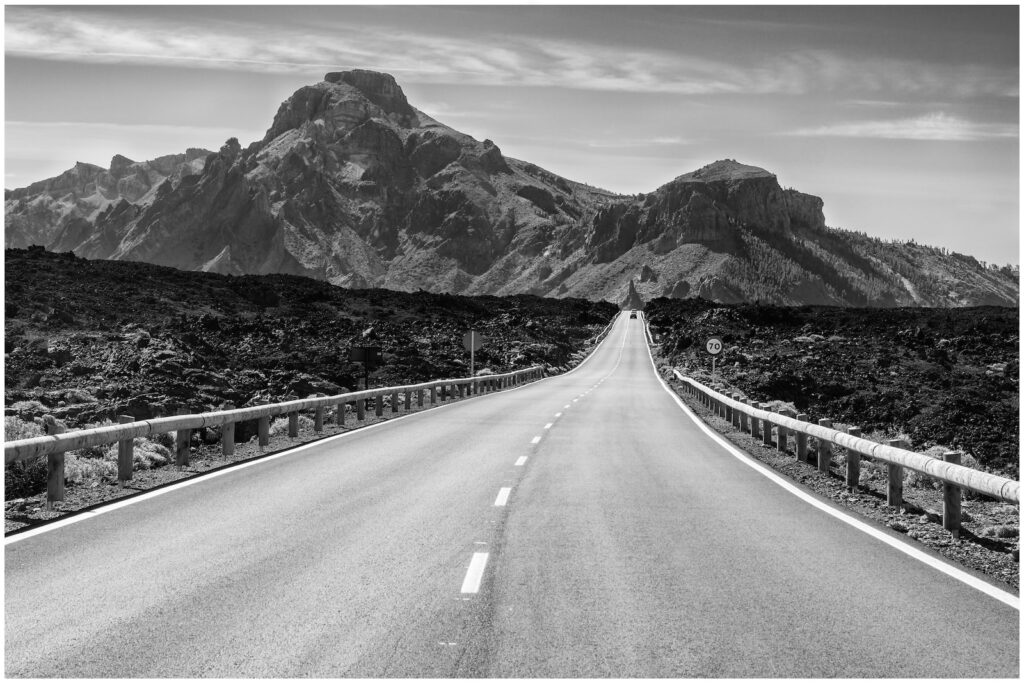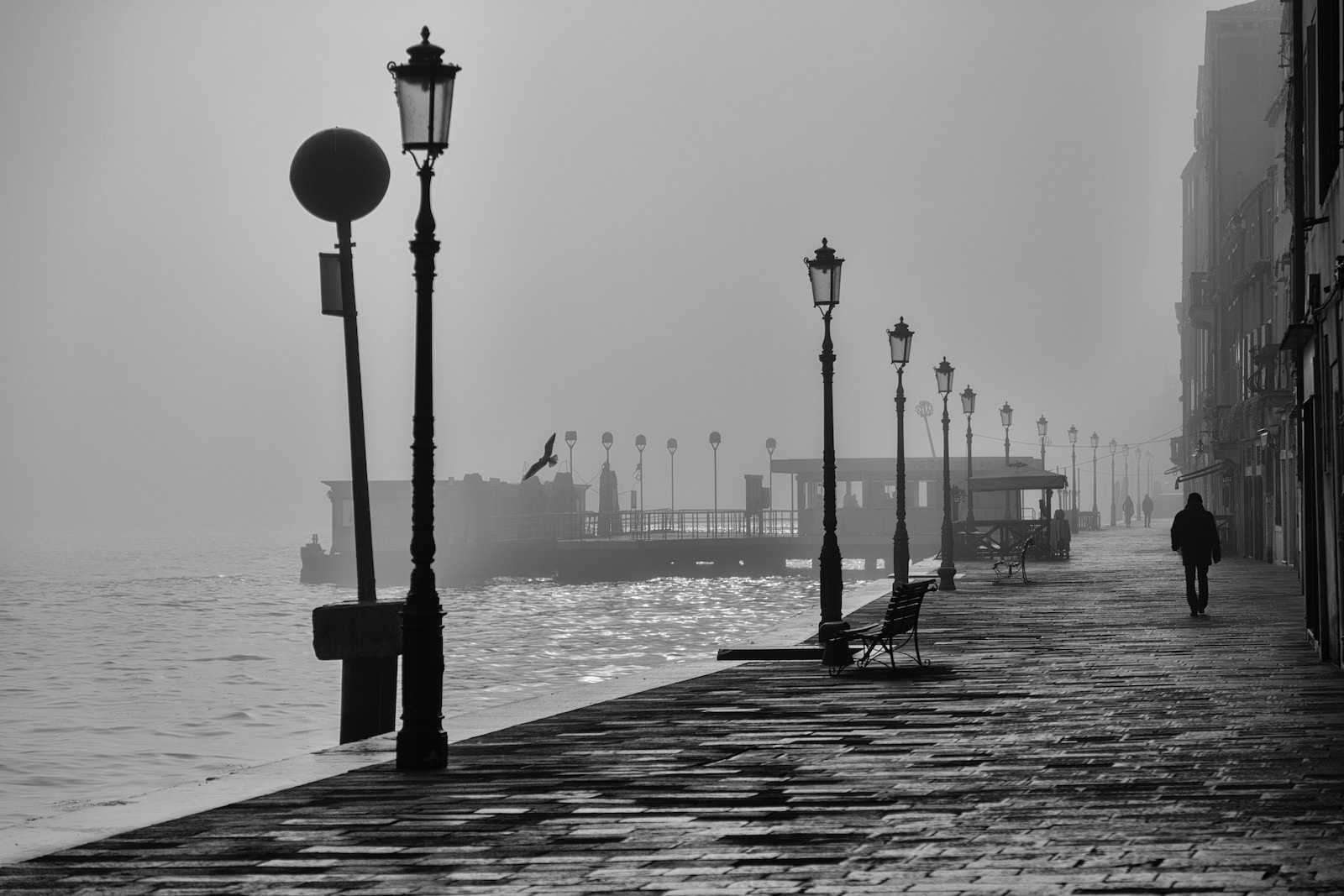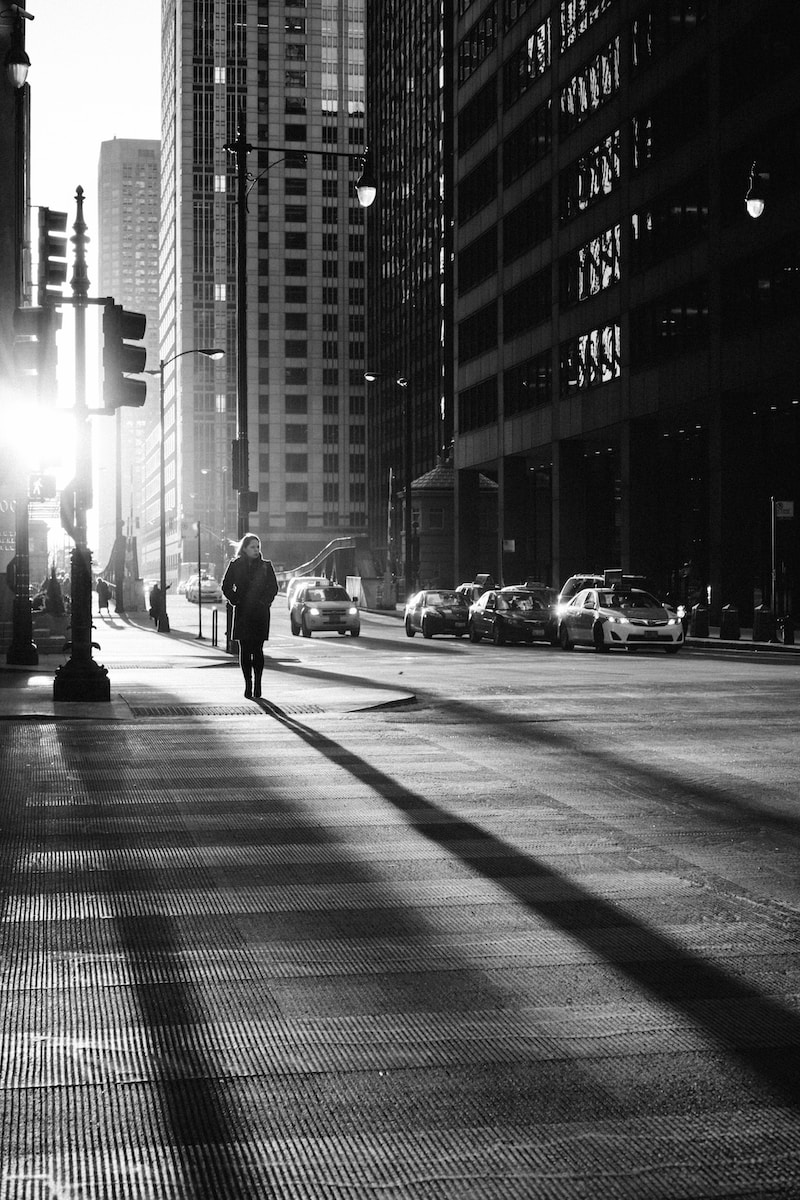Welcome to Monochrome Magic: The Art of Black & White Photography! Get ready to immerse yourself in the timeless allure of black and white photography and learn how to master this classic art form. In this blog, we will delve into the world of monochrome photography, exploring its unique aesthetic appeal, techniques, and tips to capture stunning black and white images. Whether you’re a seasoned photographer or a beginner looking to explore the world of monochrome, this blog will guide you through the enchanting journey of black and white photography.
Table of Contents
- Black & White Photography of Landscapes
- The Art of Black & White Photography
- Discover the Best Time and Vantage Points
- Frequently Asked Questions
- What is Black & White photography?
- Why choose Black & White over color photography?
- What makes a good Black & White photograph?
- How do I convert my color photos to Black & White?
- What camera settings should I use for Black & White photography?
- What subjects work best for Black & White photography?
- How do I achieve the perfect exposure in Black & White photography?
- Are there any specific post-processing techniques for Black & White photography?
- What inspires photographers to specialize in Black & White photography?
- Where can I find more resources and guidance on Black & White photography?
- Wrap Up
Black & White Photography of Landscapes
When it comes to black and white landscape photography, the sky can be a powerful subject with its textures, shapes, and patterns. Cloud formations and dramatic weather conditions can create a captivating backdrop for your monochrome images. To enhance the contrast and add depth to your photographs, consider using a polarizing filter. This filter not only intensifies the darkness of the sky but also reduces reflections and increases color saturation.
When composing your shot, seek out elements such as silhouetted trees or buildings against the sky to create a more dynamic and captivating image. Experiment with different angles and points of view to find the most striking composition.
Exploring Textures: Emphasizing Patterns and Details
One of the advantages of black and white photography is the ability to emphasize textures and patterns. Landscapes rich in textured features such as rocks, cliffs, or waves can be transformed into striking monochromatic images.
To enhance the texture in your photographs, pay attention to the quality and direction of light. Side lighting, such as during sunrise or sunset, can create dramatic shadows and highlights that reveal the details in the landscape. Additionally, using a telephoto lens can help isolate specific details, making them more prominent in your composition.
Experiment with different aperture settings to control the depth of field in your image. A smaller aperture (higher f-number) will give you a larger depth of field, making more of the landscape in focus. On the other hand, a wider aperture (lower f-number) can be used to selectively focus on a specific area, creating a visually appealing blurred background.
If your landscapes include water bodies like lakes or rivers, try using long exposure techniques to capture the movement and create a sense of serenity. This technique involves using a slow shutter speed to blur the water, giving it a smooth and ethereal appearance.
Remember, black and white photography is all about capturing the essence and mood of a scene. Experiment with different techniques and perspectives to bring out the inherent beauty of the landscapes in a monochromatic frame.
Did you know that the first photograph ever taken was black and white? It was captured by Joseph Nicéphore Niépce in 1826 using a camera obscura! Talk about the roots of monochrome photography!
The Art of Black & White Photography
Black & White photography has a timeless appeal that captures the essence of a subject in a unique and captivating way. Whether you are a seasoned photographer or a beginner, mastering the art of Monochrome photography can add depth and emotion to your images. In this blog post, we will explore the best cameras, lenses, and equipment needed to create stunning black & white photographs.
Choosing the Right Camera
When it comes to capturing black & white images, the camera you use plays a crucial role in achieving the desired results. Look for a camera that offers high-resolution capabilities, as this will allow you to capture fine details and textures. Additionally, a camera with a wide dynamic range will help maintain the tonal range in your black & white photographs.
There are various options to consider when selecting a camera:
- Full-frame DSLR cameras: These cameras offer excellent image quality and low light performance, making them a popular choice among black & white photographers.
- Mirrorless cameras: These lightweight and compact cameras provide a great balance between convenience and image quality, making them a suitable option for photographers who prefer portability.
- Medium format cameras: If you are looking for the highest level of image quality and fine details, medium format cameras are worth considering. They offer exceptional resolution and dynamic range, allowing you to create incredibly detailed black & white photographs.
The Perfect Lens for Monochrome Photography
Choosing the right lens for black & white photography depends on the type of subjects you intend to capture. Here are a few lens options that can enhance your monochrome images:
- Prime lenses: These lenses offer superior image quality and are ideal for capturing sharp and detailed black & white photographs. They often have wider maximum apertures, allowing you to achieve a shallow depth of field for added visual impact.
- Wide-angle lenses: Ideal for capturing expansive landscapes or architectural details, wide-angle lenses can add depth and drama to your black & white images. They allow you to emphasize lines, shapes, and textures, creating a dynamic composition.
- Telephoto lenses: If you are interested in capturing detailed portraits or wildlife in black & white, a telephoto lens is an excellent choice. These lenses allow you to isolate the subject from the background, creating a powerful and compelling image.
Remember, the lens you choose should complement your creative vision and the subjects you plan to photograph in black & white.
In addition to the camera and lenses, other equipment such as a sturdy tripod, neutral density filters, and a wireless remote shutter release can further enhance your black & white photography. A tripod helps you achieve sharpness and stability, while neutral density filters allow you to control exposure and create long exposure effects. A wireless remote shutter release ensures minimal camera shake when capturing your images.
By selecting the right camera, lenses, and equipment, you can embark on a journey to unleash the magic of black & white photography. So, grab your gear, find your inspiration, and capture the world in stunning monochrome.

Discover the Best Time and Vantage Points
Black & white photography has a unique allure that adds depth and emotion to any image. To truly capture the essence of a monochrome masterpiece, it is essential to choose the right time and vantage points. In this section, we will delve into the best seasons and locations that will enhance the magic of your black & white photographs.
The Magic of Different Seasons
Each season offers a distinct mood and atmosphere that can greatly enhance the impact of your black & white photos. Let’s explore the possibilities:
- Spring: The arrival of spring breathes life into every frame. The delicate blossoms, vibrant greens, and soft sunlight create a captivating contrast in your black & white compositions. The play of light and shadow on the fresh spring blooms adds an ethereal quality to your images.
- Summer: The long summer days bathe the world in a warm, golden light, perfect for capturing dramatic monochrome landscapes. The intense contrast between bright skies and deep shadows adds an element of mystery and intrigue to your photographs.
- Autumn: The fall season brings a symphony of colors that transforms into breathtaking black & white captures. The rich tones of red, orange, and gold create stunning contrasts against the stark, barren branches. The fallen leaves on the ground offer a unique texture and pattern for black & white compositions.
- Winter: The winter landscape presents an opportunity to capture the simplicity and serenity of monochrome photography. The bare trees, frost-kissed landscapes, and crisp, clean lines provide a minimalist backdrop that highlights the intricate details of your subject.
Unveiling Iconic Vantage Points
Choosing the right vantage point can make or break your black & white composition. Let’s explore some iconic vantage points that can elevate your black & white photographs:
- Cityscapes from Above: Find a rooftop terrace or lookout point to capture sweeping black & white cityscapes. The bustling streets, silhouetted buildings, and winding roads create a mesmerizing interplay of light and shadow.
- Natural Landmarks: Iconic natural landmarks such as mountains, cliffs, and waterfalls provide grandeur and scale to your black & white compositions. Experiment with different angles and perspectives to showcase the textures and patterns present in these landscapes.
- Urban Architecture: Explore the geometric shapes, lines, and patterns of urban architecture. Buildings, bridges, and tunnels provide endless opportunities for captivating black & white photography. Look for unique angles and reflections to add a touch of intrigue to your images.
- Street Photography: The raw emotions and candid moments of street photography can be beautifully captured in black & white. Seek out bustling city streets, quiet alleyways, and vibrant markets to document the human experience with artistic depth and clarity.
Remember, mastering the art of black & white photography requires experimentation and a keen eye for composition. Embrace the timeless allure of monochrome and let your creativity flow. Your camera is the key to unlocking the mesmerizing beauty of the world, one black & white frame at a time.
One useful tip for capturing stunning black & white photos is to focus on contrast. Look for scenes with strong differences between light and dark areas. This helps create dynamic and striking images that really pop in black and white. Experiment with different compositions and lighting to create a visually captivating monochrome masterpiece.
Frequently Asked Questions
What is Black & White photography?
Black & White photography is a classic technique that involves capturing images in shades of gray, without any color. It highlights contrast, texture, and composition in a unique way.
Why choose Black & White over color photography?
Black & White photography has a timeless appeal and can evoke emotions in a captivating way. It simplifies the image, allowing the viewer to focus on the subject and the story it tells.
What makes a good Black & White photograph?
A good Black & White photograph typically has strong contrast, clear details, and a compelling composition. It should convey a sense of mood, evoke emotions or tell a story.
How do I convert my color photos to Black & White?
To convert your color photos to Black & White, you can use photo editing software like Adobe Photoshop or Lightroom. Experiment with different grayscale conversions and adjust brightness and contrast to achieve the desired effect.
What camera settings should I use for Black & White photography?
Camera settings for Black & White photography are similar to those for color photography. However, it’s essential to pay attention to contrast, shadows, and highlights to make sure they’ll translate well into Black & White. Experiment with different settings to achieve the desired look.
What subjects work best for Black & White photography?
Black & White photography is versatile, and almost any subject can work well. However, subjects with strong lines, textures, or interesting patterns often make for compelling Black & White images. Experiment with different subjects to discover your own unique style.
How do I achieve the perfect exposure in Black & White photography?
Achieving the perfect exposure in Black & White photography is similar to color photography. Use the histogram to ensure you have a good range of tones from pure white to pure black. Pay attention to the highlights and shadows to maintain detail and add depth to your images.
Are there any specific post-processing techniques for Black & White photography?
Post-processing techniques for Black & White photography involve adjusting the contrast, brightness, and tonal values to enhance the image’s mood and impact. Experiment with different techniques like dodging and burning to bring out specific areas of your photograph.
What inspires photographers to specialize in Black & White photography?
Black & White photography offers a unique artistic expression and allows photographers to focus on composition, contrast, and texture. Many photographers are inspired by the rich history and timeless beauty associated with Black & White images.
Where can I find more resources and guidance on Black & White photography?
There are numerous online resources, photography forums, and communities dedicated to Black & White photography. Additionally, books and tutorials by experienced photographers can provide valuable insights and inspiration to help you master this art form.
Wrap Up
Now that you’ve delved into the captivating world of black and white photography, it’s time to unleash your creativity. Remember, practice makes perfect, so don’t be afraid to experiment with different techniques and subjects. Whether you’re shooting with a dedicated camera or a smartphone, the key is to find intriguing subjects, play with light and shadows, and capture the essence of the moment.
Do you have any favorite tips or tricks for black and white photography? Is there a specific subject you love to photograph in monochrome? We would love to hear from you! Share your thoughts and experiences in the comments below and let’s continue this conversation. Happy shooting!



